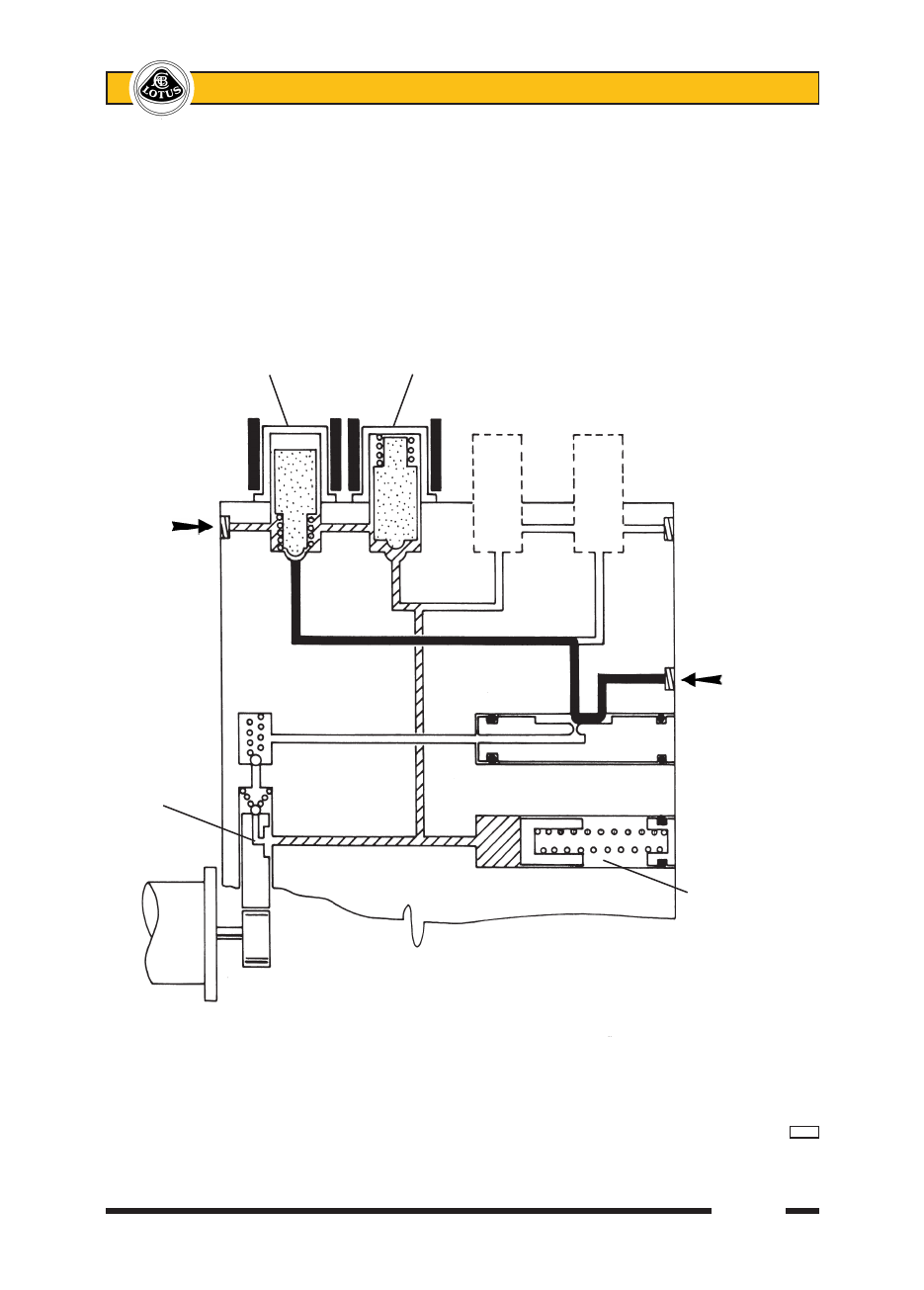Lotus Evora. Instruction - part 50

Lotus Service Notes
Section JL
Pressure Reduction
Once the LH front wheel brake circuit has been isolated from the master cylinder, the pressure must be
reduced in order to allow wheel speed to be restored. This pressure reduction is achieved by the ECM energis-
ing the dump valve solenoid, which then opens against spring pressure and bleeds off some of the fluid into the
low pressure accumulator shared with the RH front circuit. Very short activation pulses are used to maintain
close control of the pressure reduction, and to limit the reduction to that required to restore wheel speed. Fluid
displaced from the wheel brake circuit is stored in the front brake accumulator against spring pressure, and is
also used to prime the hydraulic pump.
Isolation valve Dump valve
energised and energised and
closed open
Fluid
bleeds
off from
LHF circuit
Inlet from
master
cylinder
Pump is
primed
Low pressure
accumulator
charged
j149c